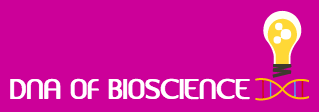Dna damage would be due to to mismatch base pairing , catalyzed by environmental agents(ionizing radiation ,certain chemicals and uv radiation ) and may be spontaneously .
TYPES OF REPAIR PROTEINS/ENZYMES EFFECTS
1.MISMATCH REPAIR Dam methylase, MUT -H Results in mismatch
MUT-L AND MUT-S proteins, Bases
Dna helicase II, SSB,Dna pol III,
Exonuclease I,Exonuclease VII,
Recj nuclease ,Exonuclease X,
Dna ligase
2.BASE
EXCISION REPAIR Dna glycosylase ,Ap endonuclease , A. Abnormal bases
Dna polymerase -I ,Dna ligase (Uracil,xanthine,
Hypoxanthine )
B.Pyrimidine dimers
3.NUCLEOTIDE
EXCISION REPAIR ABC exonuclease,DNA POL-I, Pyrimidine dimers
Dna ligase
4.DIRECT REPAIR DNA photolyase Pyrimidine dimers
correction of O6 methyl guanosine 7
nucleotide methyl transferase
Repair of alkylated bases By AlkB(Alpha keto glutarate Fe2+ dependent deoxygense )
5.Recombinant repair Repair of Double stranadard breaks. It utilise the homologos chromosomes by exonuclease.
Thank you for visiting my blog. Please share your comments on this
article. Subscribe and follow me in Google + to get notified with new articles.
TYPES OF REPAIR PROTEINS/ENZYMES EFFECTS
1.MISMATCH REPAIR Dam methylase, MUT -H Results in mismatch
MUT-L AND MUT-S proteins, Bases
Dna helicase II, SSB,Dna pol III,
Exonuclease I,Exonuclease VII,
Recj nuclease ,Exonuclease X,
Dna ligase
2.BASE
EXCISION REPAIR Dna glycosylase ,Ap endonuclease , A. Abnormal bases
Dna polymerase -I ,Dna ligase (Uracil,xanthine,
Hypoxanthine )
B.Pyrimidine dimers
3.NUCLEOTIDE
EXCISION REPAIR ABC exonuclease,DNA POL-I, Pyrimidine dimers
Dna ligase
4.DIRECT REPAIR DNA photolyase Pyrimidine dimers
correction of O6 methyl guanosine 7
nucleotide methyl transferase
Repair of alkylated bases By AlkB(Alpha keto glutarate Fe2+ dependent deoxygense )
5.Recombinant repair Repair of Double stranadard breaks. It utilise the homologos chromosomes by exonuclease.
Thank you for visiting my blog. Please share your comments on this
article. Subscribe and follow me in Google + to get notified with new articles.


